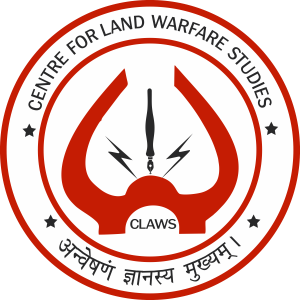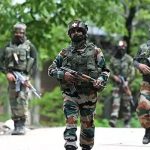Introduction
After gaining independence in 1947, India and African countries have undergone tremendous changes, moving against the colonial legacies that are shared history. India supported decolonisation and independence of African countries in the 50s and 60s in UN and other global forums. From international geopolitics in yesteryears, in more contemporary times we have now reached the stage of robust economic and security ties. With similar needs for Strategic Autonomy and South – South solidarity, both India and Africa are walking on the same path side by side, and while some has been accomplished, much more can be achieved through mutual exchanges. Africa accounts for 54 votes in the UN which is rewarding for India in promoting important global causes, such as the need to reform the UN to balance the contemporary Geopolitical North South inequality. Within Africa, are also 21 of the fastest growing economies, and when we add 1.7 billion people it becomes a market that cannot be overlooked. Thankfully, trade between India and Africa grows with the Indian Defence sector forming a small part of it. India needs African countries for our Security and Growth for All in the Region (SAGAR) doctrine, specially in the Western Indian Ocean. The growing defence interactions also place India as a Preferred Security Partner in Africa, countering influences of other power blocks in the region. Africa is thus intrinsic to India’s global diplomatic initiatives, economic growth and status of net security provider.
African Security Landscape
With 54 countries having different colonial legacies and post-colonial influences, there is a myriad of security challenges in Africa to include terrorism, insurgencies, piracy, internal and regional conflicts. These are wrestled in the spotlight of external influences, debt traps (e.g. Chinese Belt & Road Initiative), resource constraints and governance issues such as coups etc. All this adds up to bringing in tremendous chaos and instability in the region. While some countries have very modern militaries to manage this volatility, there are those with very antiquated ones, with defence ethos and equipment of an era gone by. Overall, there is a need to build capacity bring in modernisation and technology to the existing platforms or adding new ones and train for the modern era. The military equipment used on the African continent too is of different origins. Western Origin platforms are sought after by some countries such as South Africa and Kenya, others like Algeria and Sudan rely on Russian Origin Equipment and some countries like Egypt use and integrate Russian, Western and even Chinese Systems.
Current Indo African Defence Interactions
Post independence, India’s engagement with Africa has developed in a mutual frame. Within this overall arena, that of defence relations has deepened significantly through military exercises, bilateral agreements, training, capacity building and defence exports. All this is happening in the backdrop of great power competition in Africa, between the West on one hand and Russia China on the other. Some important aspects of this are seen in: –
- Bilateral Agreements. Some 20 pacts have been signed with various countries in Africa. MoUs on Defence aspects with Morocco and South Africa, Intelligence sharing and maritime security arrangements with Nigeria and training for Algeria and Tanzania are some of these.
- Joint Military Exercises. India has been participating in a number of Joint Military Exercises with African Countries. In 2025 Africa India Key Maritime Engagement (AIKEYME) 2025 was jointly hosted by India and Tanzania and also included participation of Comoros, Djibouti, Kenya, Madagascar, Mauritius, Mozambique, Seychelles and South Africa. AIKEYME) 2025 focused on Naval cooperation and was aligned to India’s role of a Net Security Provider in the Indian Ocean. There are other multilateral exercises involving land and air aspects in which India participates. These are important to maintain defence engagements and showcase own military hardware, one such was AFINDEX 2023, a land based exercise where 23 African Nations participated.
- Defence Exports. Indian Defence Exports have increased exponentially in the last decade. Currently 15 African countries have either bought Indian Defence equipment or have shown interests. The main reasons are the competitive pricing of Indian made defence equipment, customisation for African needs and the Indian Government’s assurance of continued supply chain support. Also, in a rare strategic move a line of credit has been given to Angola for procuring Indian Defence Equipment. In the last one year some notable exports to African countries are as under: –
Exported
- ISR UAVs
- Anti Drone Systems
- Loitering Ammunition
- Trucks 8×8 & 12×12
- Wheeled Armoured Platform
- Brake Parachutes for Fighter Jets
- Small Arms Ammunition
- Ballistic Combat Helmets
- Coast Guard Interceptor Boat
Likely Future Exports
- Light Combat Helicopter
- BMP-2 Sarath
- Radars
- Brahmos
- Akash
- Light Armoured Multipurpose Vehicle
Opportunities for India in the African Defence Landscape
- Capacity Building for African Security. Besides upskilling of the Human Capital through various training programmes, Africa needs to build Cyber Defences where India has very strong foundations. In addition, India can assist in Capacity building for Maritime Security, Logistics & Technology infusion with its vast resources in shipping, infrastructure building and IT and electronic industries.
- Defence Exports. While a start has been made, the overall exports are miniscule currently. This is likely to change as the Indian Defence Industry is growing at an exponential rate and is very competitive in the global defence arena. For the Western and Russian and even mixed platforms, India can provide a sustained and safe supply chain for spares through an already existing and rapidly growing Indian Defence and Aerospace Sector. India can also supply full platforms which are being made in India at very competitive prices compared to the Western and Russian equipment.
- Maintenance, Repair and Overhaul (MRO). A part of the growing Defence Sector, India today has extensive MRO capabilities in well established Public Sector Units (PSUs) for almost all kinds of Defence Equipment. The private sector has also started coming into this vertical recently with overhaul services, inspection, replacement, defect rectification and modification for upgrading existing Land, Air & Sea platforms. With decades of expertise in operating both Western and Russian origin equipment, inexpensive pricing and a growing innovative startup segment, it’s a lucrative proposition for African Nations and one which should be pursued persistently by Indian PSUs as well as Private Indian Companies.
- Industrial Presence. Tata’s won a competitive contract in Morocco for their Wheeled Armoured Platform against global competition. They have also opened India’s first overseas defence manufacturing facility in Berrechid, in Morocco’s Casablanca region. The Armoured platform has been found to be suitable for African Countries and is replacing legacy European Armoured Vehicles. While the plant will at first look at equipping Moroccan Army, it intends to later export different variants to other African Countries. There are hundreds of local jobs being created and in staggered timeframe 50% local content is to be added. This would increase the contribution of local ancillary companies, overall becoming an economic Defence Manufacturing success for Morocco & India. Surely, there are other African Countries who would like to see a similar model work in their country too.
Conclusion
India and Africa have come a long way in these last seven to eight decades. With a shared history there are opportunities for both in diplomacy, growth and security for each other to co-develop in various spheres. Within the security landscape the relationship spans joint exercises, training, defence exports and even industrial collaboration. There are many more opportunities that need to be explored and acted upon. Capacity building in terms of human skills, defence infrastructure, maritime and technology is what African countries need and what India can readily provide. The use by African countries of a mix of Western & Russian equipment aligns well with India’s experience in maintaining and upgrading these. India can provide cost effective tailor made solutions backed by MRO services that would make African armies reach new levels of modernity comparable to the best. Tatas and their Wheeled Armoured Platform manufacturing plant in Morocco have laid a path for many more such projects, with a dual aim of developing African Industries as well as promoting Indian equipment. Exercises like the AIKEYME 2025 & AFINDEX not only demonstrate India’s commitment to regional security, they also provide India with the wherewithal to act upon its role of Net Security Provider. The Indo African defence partnership is thus rooted in history, encourages mutual stability and promotes a balanced global order.














